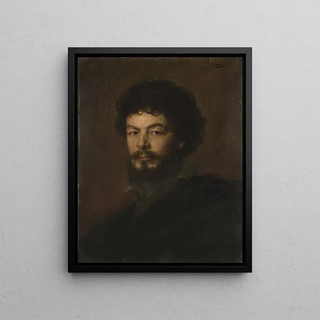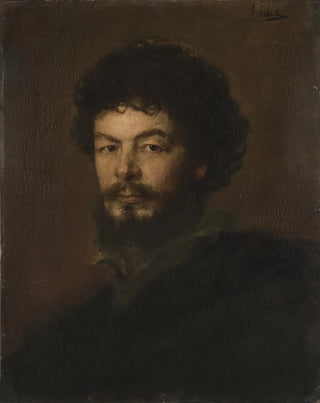Art print | L'architecte Lorenz Gedon - Franz von Lenbach


View from behind

Frame (optional)
L'art print of L'architecte Lorenz Gedon - Franz von Lenbach – Engaging Introduction
In the vast panorama of art history, certain works stand out for their ability to capture the essence of an era while telling a unique story. "L'architecte Lorenz Gedon" by Franz von Lenbach perfectly exemplifies this tradition. This portrait, imbued with psychological depth and meticulous details, immerses us in the fascinating world of 19th-century architecture, while revealing the artist's technical mastery. The depiction of Gedon, an iconic figure of his time, is not merely a portrait; it is an ode to intellect and creativity, a celebration of the human spirit through the lens of architecture.
Style and uniqueness of the work
Lenbach's work is characterized by a realistic style and a particular attention to detail that transcends mere visual rendering. The choice of colors, the subtle lighting that envelops Lorenz Gedon's face, and the textures of the clothing all testify to a careful observation of reality. Lenbach succeeds in creating an intimate atmosphere, where one can almost feel the presence of the architect in the room. The composition, though classical, is energized by a play of light and shadow that gives the portrait an almost sculptural dimension. The artist does not simply depict his subject; he elevates it, revealing not only Gedon's external appearance but also his character and personality. This approach makes each of Lenbach's works a window into the soul of his subjects.
The artist and his influence
Franz von Lenbach, born in 1836 in Landau, was a German painter whose career was marked by a constant quest for technical perfection and a deep understanding of human psychology. Influenced by the great masters of painting, he developed a style that was uniquely his own, combining realism and romanticism. Lenbach had the opportunity to paint many illustrious figures of his time, ranging from artists to politicians, and his work significantly contributed to shaping the perception of portrait art in the 19th century. By incorporating elements of daily life and psychological traits into his portraits, he paved the way for a new approach to

Matte finish

View from behind

Frame (optional)
L'art print of L'architecte Lorenz Gedon - Franz von Lenbach – Engaging Introduction
In the vast panorama of art history, certain works stand out for their ability to capture the essence of an era while telling a unique story. "L'architecte Lorenz Gedon" by Franz von Lenbach perfectly exemplifies this tradition. This portrait, imbued with psychological depth and meticulous details, immerses us in the fascinating world of 19th-century architecture, while revealing the artist's technical mastery. The depiction of Gedon, an iconic figure of his time, is not merely a portrait; it is an ode to intellect and creativity, a celebration of the human spirit through the lens of architecture.
Style and uniqueness of the work
Lenbach's work is characterized by a realistic style and a particular attention to detail that transcends mere visual rendering. The choice of colors, the subtle lighting that envelops Lorenz Gedon's face, and the textures of the clothing all testify to a careful observation of reality. Lenbach succeeds in creating an intimate atmosphere, where one can almost feel the presence of the architect in the room. The composition, though classical, is energized by a play of light and shadow that gives the portrait an almost sculptural dimension. The artist does not simply depict his subject; he elevates it, revealing not only Gedon's external appearance but also his character and personality. This approach makes each of Lenbach's works a window into the soul of his subjects.
The artist and his influence
Franz von Lenbach, born in 1836 in Landau, was a German painter whose career was marked by a constant quest for technical perfection and a deep understanding of human psychology. Influenced by the great masters of painting, he developed a style that was uniquely his own, combining realism and romanticism. Lenbach had the opportunity to paint many illustrious figures of his time, ranging from artists to politicians, and his work significantly contributed to shaping the perception of portrait art in the 19th century. By incorporating elements of daily life and psychological traits into his portraits, he paved the way for a new approach to






